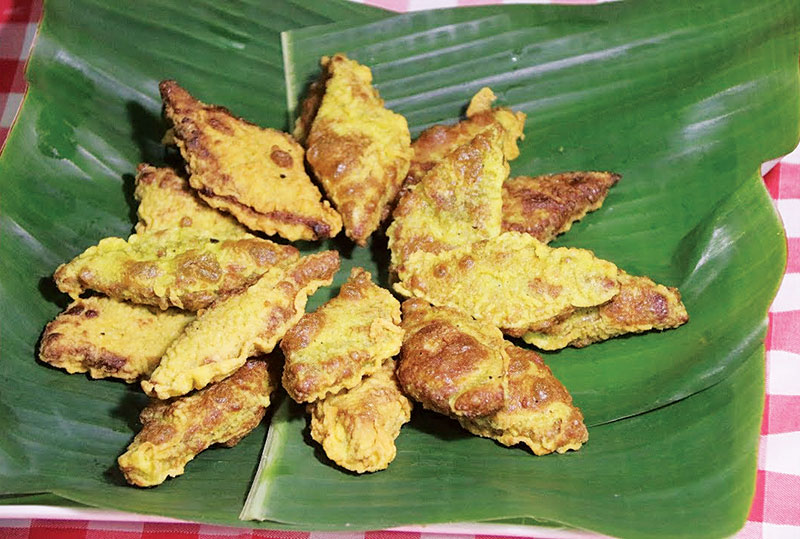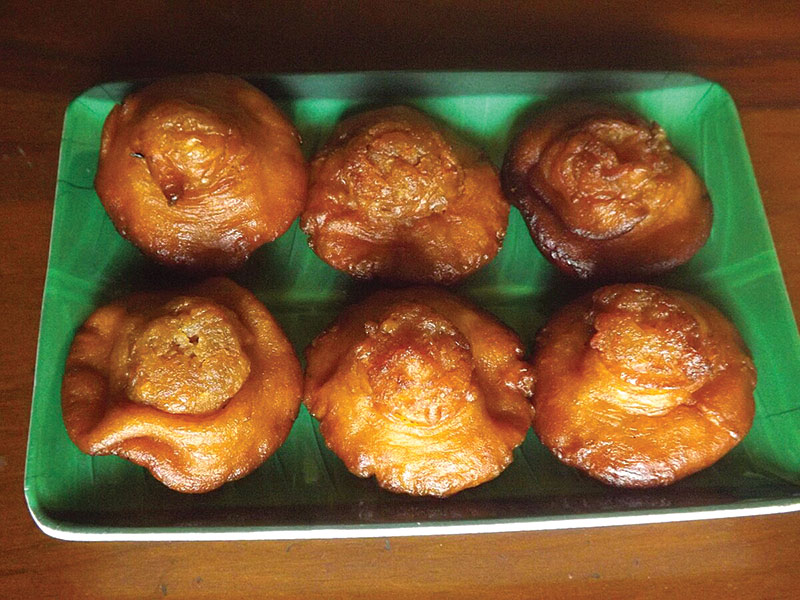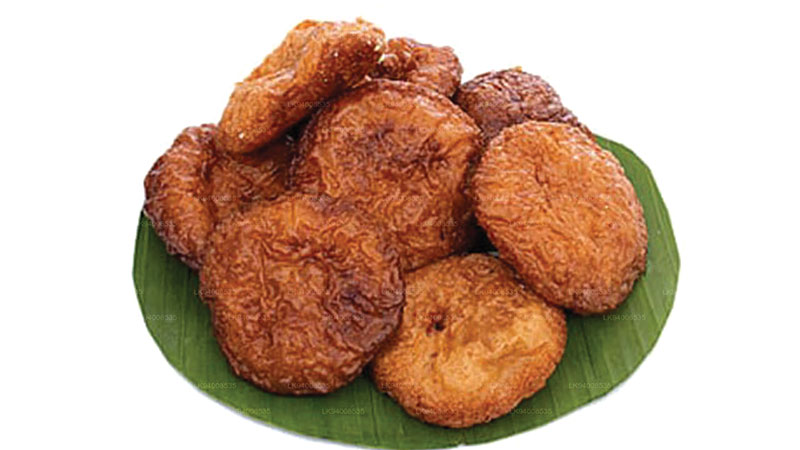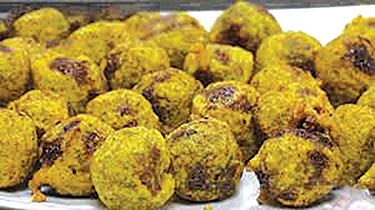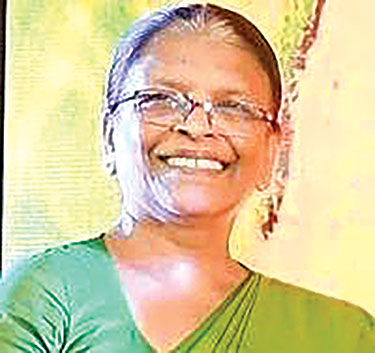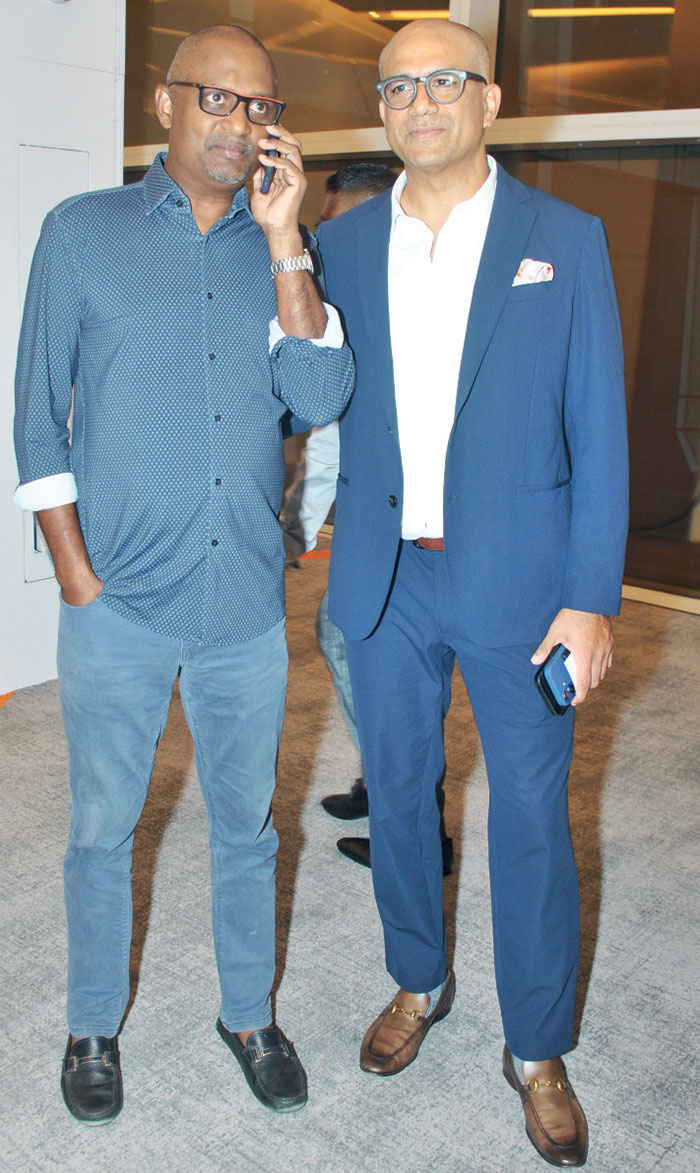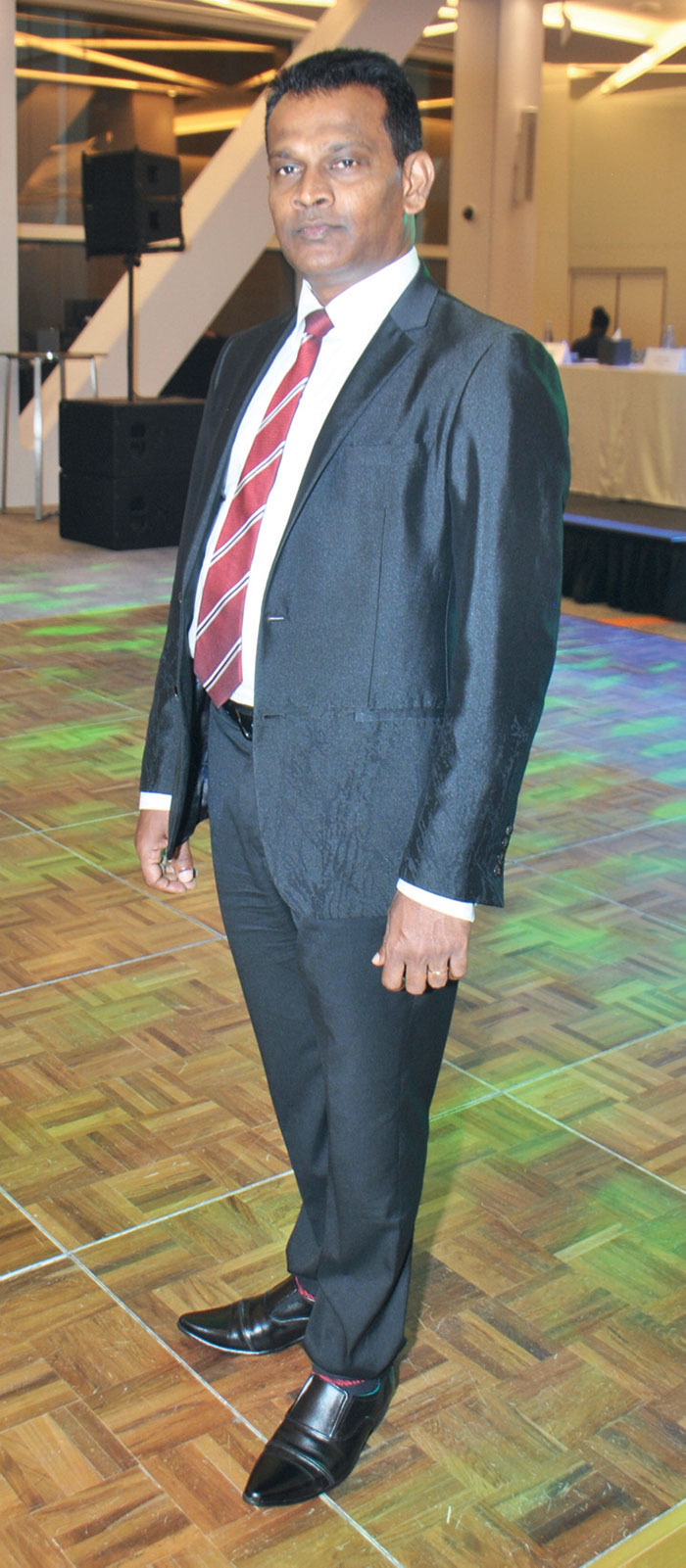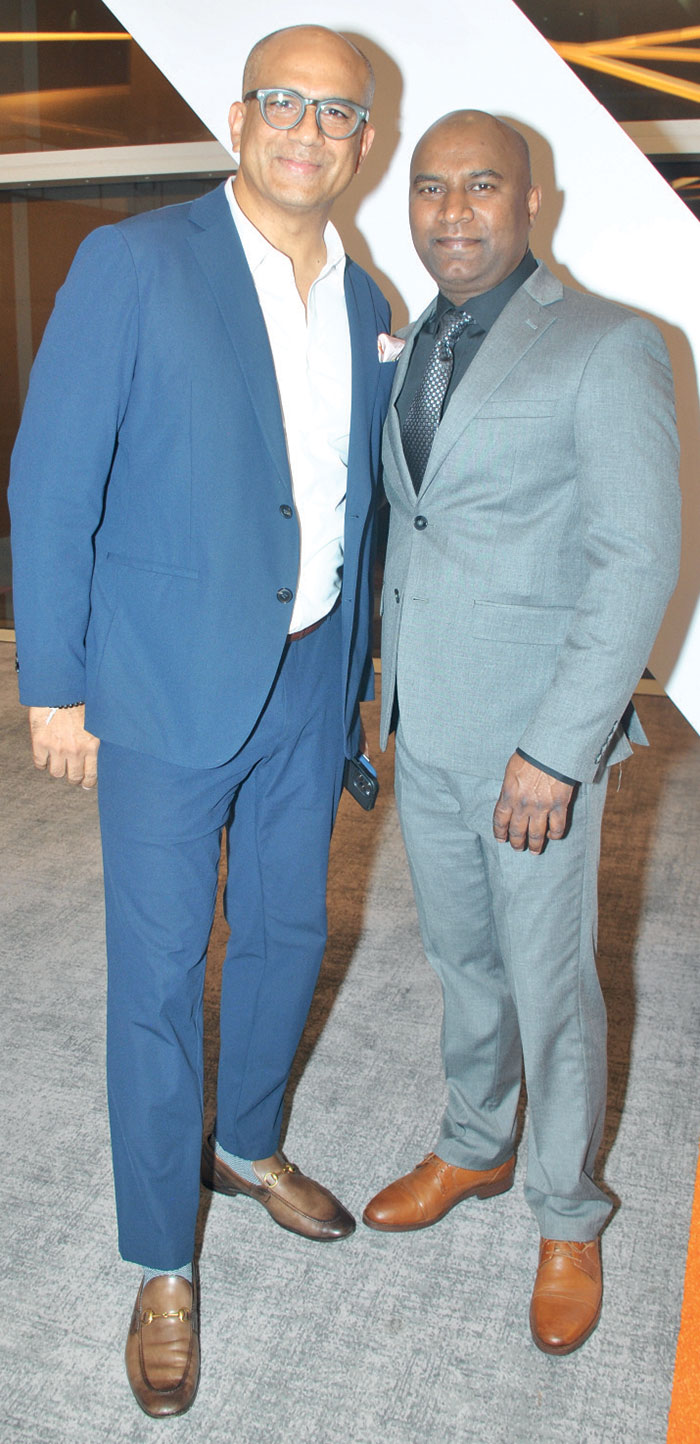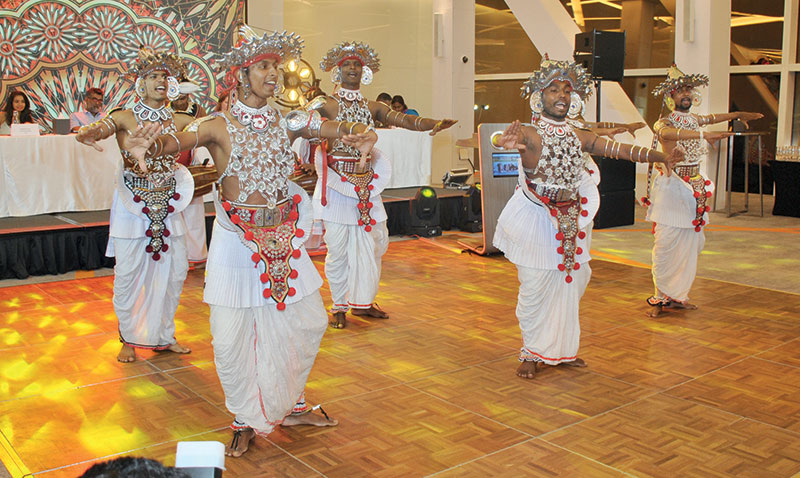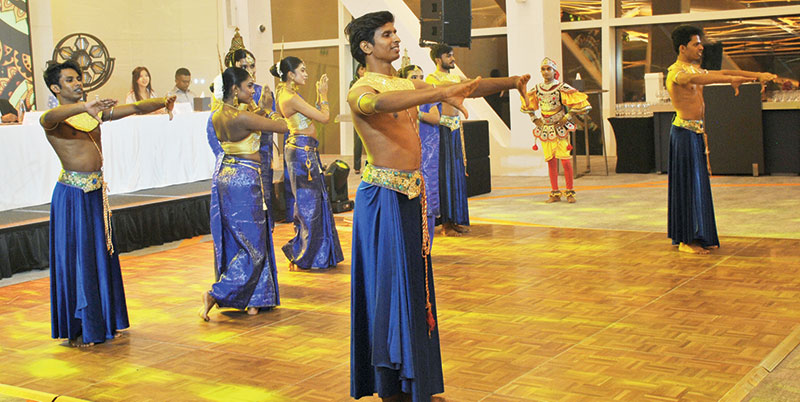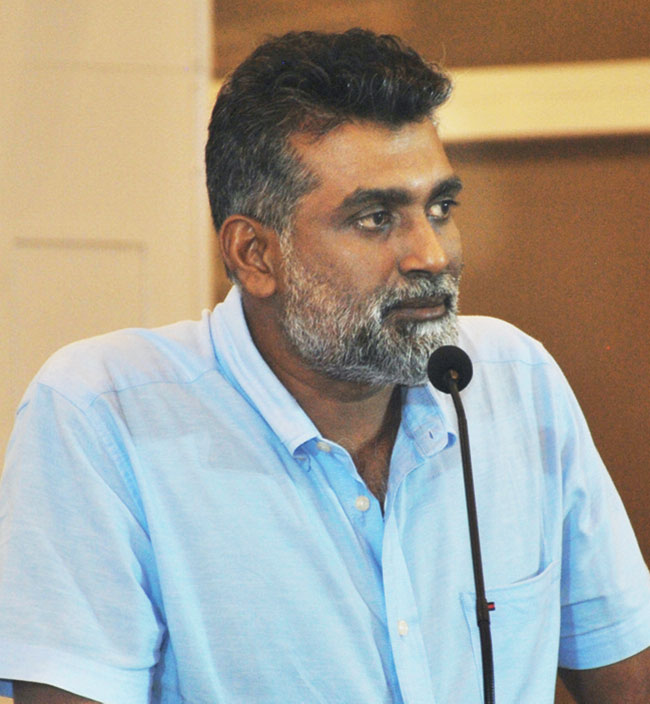Life style
From small boy to author: a Thomian’s oddysey

by Uditha Devapriya
“Farren the Wanderer”, written by Sachintha Pilapitiya and published by Neptune Publications, hit the shelves at the Book Fair on September 19
At S. Thomas’ Prep Kollupitiya, Sachintha Pilapitiya had trouble speaking in English. The problem hadn’t been his articulation or pronunciation; it had been his grammar. “Every time I opened my mouth,” he remembers, “I knew I’d trip somewhere.”
Ordinarily this would have discomfited someone, draining his or her confidence, preventing him or her from talking ever again. For Sachintha, though, the way forward seemed clear. “I resolved to speak no matter how many mistakes I made.” Having wound up as Head Prefect, he knew he had to brush up quickly. “I invariably had to speak at official functions, especially at the Assembly. So I’d go through the speeches I had written many times before I walked to the podium and delivered them.” For a while, he says, it worked.
But such a solution couldn’t last forever, and Sachintha knew that only too well. So when two of his friends – twins and batch mates – “introduced” him to the Prep School Library, he was thrilled. They would have been in Grade Three or Four then. “We discovered Enid Blyton: Famous Five, Secret Seven, and so on.”
From there they graduated to Hardy Boys, “though we didn’t move on to Nancy Drew.” When in Grade 10, he was indulging in Dan Brown, and when he offered English Literature for his O Levels, his tastes had considerably widened. By then he was poring over “serious” writers: Dickens, the Bronte sisters, and of course Shakespeare.
The Local O Level English Language paper lasts three hours, but can be completed in less than 30 minutes. At a term test Sachintha had written it in 10. That left well more than two hours to do anything he wanted in the classroom. So he reflected on the books he had read, the speeches he had made, and wrote down a story. The story was about an adventurer, an explorer, or as its author put it, a “wanderer.” It incorporated the genres he’d grown up on and grown up with, especially fantasy, sci-fi, and adventure. “I finished the basic structure in two hours. When I came back to it, I fleshed it out even more.”
That was years later. By then he had completed his A Levels, finished school, and entered university. Having added other characters and subplots, he felt ready to publish it. Through an uncle, Chamikara Pilapitiya, he met a publisher, and did just that.
Farren the Wanderer hit the Book Fair at the BMICH on September 19. While I have read the book, pored over its illustrations, and let it take back me back to a childhood spent dreaming of fantastic beasts, unrelenting explorers, charming princes, and beautiful princesses, I am less interested in its story, and how it will captivate young readers, than I am in its author, and how he grew up.
Sachintha Pilapitiya was born in Kelaniya in 2000. His father had found employment in the medical industry, while his mother worked in the IT Department at Brandix; after his sister was born two years later, she quit her job to look after them.
His parents fuelled his love for writing. From an early age his mother would tell him bedtime stories: of beasts, explorers, princes, and princesses. His father, a more practical and hands-down person, would take him and his sister out exploring, “from the north to the south and virtually everywhere in-between.” This soon brought him into contact with the immense diversity and richness of the land of his birth, a theme he has woven into all his written work thereafter. “My father put wanderlust in my blood. My mother, on the other hand, instilled a love for imagining things, for writing them down, in me.”
All that had been long, long before his education began. His first school, S. Thomas’ Prep, had contained a close-knit community, where, he remembers, differences of race and faith just melted away. “Even today, I can remember the names of almost everyone three years my junior there, and practically all the teachers and staff.”
A whole flurry of extra- and co-curricular activities, of sports and clubs, followed. In Grade Three he joined the school rugby team, and in Grade Eight he joined cadetting, two activities at which his father had excelled. While indulging in these, he straddled other pursuits as well: Cub Scouting until Grade Five, Badminton from Grade Six (winding up as the Captain), and the Interact Club from Grade Eight. Of these Cadetting had occupied him the most, and he climbed up to the post of Cadet Sergeant.
School concerts had also taken up his time. “I was always a girl: Goldilocks, Sleeping Beauty, Rapunzel, you name it,” he chortles. (I tell him that he could have fared worse; after all some of us were flowers, trees, and bushes!) “I pursued Kandyan dancing and underwent an ada ves ceremony, short of a complete ves mangalya. Given my deficiency in grammar, I began attending St Theresa’s School of Speech and Drama in Kelaniya as well.
For his O Levels, Sachintha had offered English Literature. “Not that the books we did were that interesting, though they were – R. K. Narayan’s The Vendor of Sweets, plus an anthology of poems – but I personally found the stories I discovered at the library much more fascinating.” Nevertheless he came to like his subjects, and having passed them secured a placement at S. Thomas’ College Mount Lavinia.
Sachintha entered S. Thomas’ Mount in 2017. At first, he didn’t see any difference. “It was the College version of Prep, or so I thought.” Later, however, those differences came to light, especially after his parents boarded him at the College hostel. “At Prep we had been a tight and close community: everyone knew everyone else. Here, on the other hand, it was difficult to establish contact with everyone you met.” This issue had been heightened by his parents’ decision to enrol him at the hostel, “a necessity, given that otherwise I’d have to travel to and from Kelaniya every day.”
One of the most frequent themes that run through Farren the Wanderer is the importance of understanding other communities. This came to Sachintha in his hostel years, particularly due to the people he befriended there. According to Sachintha, most of them were even less equipped with English than him. That had underlined a more glaring division: not just of language, but also of class.
“Most of those in the hostel hailed from far-off places, and nearly all of them had attended S. Thomas’ Gurutalawa or Bandarawela. They were encountering English for the first time here, in Mount. The first few days at the boarding became hard to adjust to. Once I got to befriend them well, they taught me about life. In turn I taught them English. I believe, and I hope, that I succeeded, because it was my way of repaying my debt to them.”
The crowning moment of these encounters had been an Inter-House Drama Competition in 2018. Accordingly, the boarding students who belonged to Sachintha’s House – Sachintha being the House Captain – had to jump over their linguistic handicap, since they were competing against ordinary College students “all or most of whom hailed from English speaking backgrounds and could muster only broken Sinhala.” The odds were not in their favour, clearly; everything seemed to favour their competitors.
And yet, they emerged runners-up. That had shocked everyone. For a while thereafter, the feeling persisted that, somehow, the “bounders” had triumphed.
Sachintha found the experience refreshing. “It showed not only that we could prevail, but also that we could rebel against the stereotype of us being rasthiyadukarayo, which is how many ordinary students viewed those boarded at College.” Along the way, he managed to seal his friendships with them. “Even now, I know that if I call them up, they’ll be with me and by my side. They may have been demeaned as loafers, but I know that they are much, much more sincere than those who demean them.”
I feel I’ve written too much. I’ll conclude by mentioning that Sachintha offered an unusual combination for his A Levels – Combined Maths, Literature, and Economics – and topped them so well that New York University Abu Dhabi offered him a scholarship. He plans to leave the next year, in January or February, and “to carry forward my wanderlust.” He could have added, though he didn’t, that he’ll continue to write there, as he has here: while majoring in Economics and Legal Studies, he plans to minor in Creative Writing. In those two paths, no doubt, lies the key to his future.
The writer can be reached at udakdev1@gmail.com
Life style
Kevum – Befitting a King
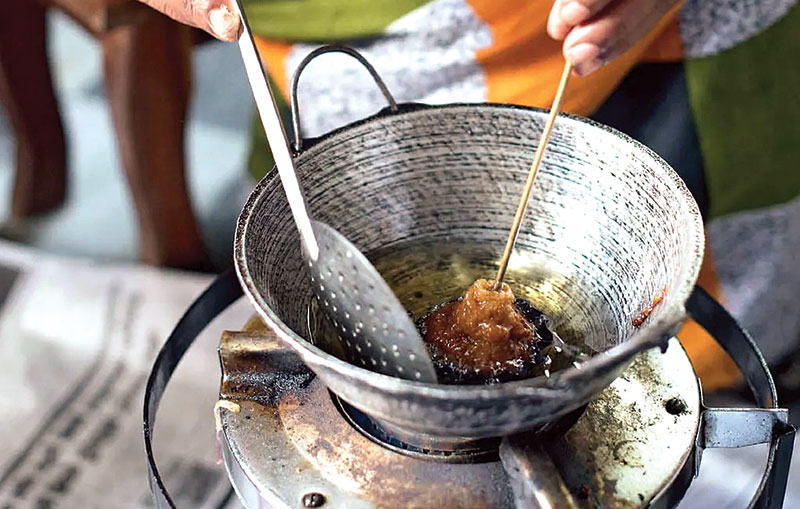
The avurudu table of any Lankan home is complete only when it is laden with kevum. Dating back to ancient times, many types of kevum are chronicled even in our classical texts. The Dutch rulers of the island are said to have relished them, some even asking if they grew on trees… A delicacy which was offered to visiting dignitaries, kevum was revered by our kings even in the battle field not only as an energy-booster but also as a wound disinfectant.
BY RANDIMA ATTYGALLE
The culmination of Avurudu preparations in my childhood with my grandparents was marked by the ritual of Kevum-making. Athamma would ‘book in advance’ the kevum specialist Soida Hami (Soida aachchi to us children), and install a special hearth in her back verendah for the grand moment. I would watch Soida aachchi in wonderment as her thick batter of rice flour and best of kithul treacle shaping into kevums in a hot wok of coconut oil. The long kevum koora in her nimble fingers would achieve the feat of the perfect konde. It was almost a rite of reverence, so much so I was not supposed to talk to her until the first batch of Konda-kevums was completed. Like many old-folk of her vintage, Soida aachchi believed that talking while the first few kevums are done would result in a flawed product.
She would then place each perfect Konda kevuma on a banana leaf for the excess oil to drain. Once the whole exercise was completed, she would place Konda-kevum in large earthen pots and store them in the dum messa or the storage area above the main hearth of the kitchen. She would spare me only one kevuma and the rest had to wait until the auspicious time on avurudu day!
Travellers’ records
Robert Knox an English sailor who was held in captive in the court of the Kandyan King Rajasinghe II and one of the prolific chroniclers of ancient Ceylon in his famous work, An Historical relation of the Island Ceylon documents on the sweet meats of Lankans with a special account of kevum.
‘They have several sorts of sweet-meats. One they call Caown. It is like to a fritter made of Rice-flower and Jaggory. They make them up in little lumps and lay them upon a leaf, and then press them with their thumbs and put them into a frying-pan and fry them in Coker-nut Oyl or Butter. When the Dutch came first to Columba, the King ordered these Caown to be made and sent to them as a royal treat. And they say, the Dutch did so admire them, that they asked if they grew not upon trees, supposing it past the Art of man to make such dainties.’ (Spelling as in the original Knox)
The account of Knox enables rich insights into this wonder of a sweet meat which enthralled many a traveller to the island including dignitaries. The European trader Cosmas who visited Ceylon in 545-550 AD, documents that along with gems, Kevum and Kalu dodol from Ceylon were taken to the Roman court of Emperor Claudius during the sixth century.
- Mun kevum
- Konda kevum
- Athirasa
Classical literature
Kevum dates back to ancient times and our classical texts such as the Ummagga jatakaya, Pujawaliya and Saddharma Ratanawaliya bear evidence to this fact. “Originally known as poopa this sweet meat came to be known as kevum in the Dambadeniya-Kurunegala era. Jathaka atuwa getapadaya mentions 18 kinds of sweet-meats found in the ancient Sri Lanka and among them are several types of kevum such as sendi kevum, mal kevum, athirasa, pena kevum, raa-kevum,” says Prof. Kusumalatha Lankamulla from the Department of Sinhala and Mass Communication at the University of Sri Jayewardenepura.
This scholar with research interest in Culture, Traditional and Modern Literature goes onto note that Mahawamsa in its 32nd chapter refers to two types of kevum in the context of alms offered by King Dutugemunu. The two types- thel kevum and maha de kuvum mentioned, were fried in ghee. “Many of our classical texts mention kevum in multiple festive contexts beyond avurudu. In Ummagga jathakaya, kevum is mentioned as a fitting gift to be taken when visiting parents. Saddharma Ratanawaliya refers to boxes of kevum or kevum pesa.“
An energy booster
Among the popular kevum types found today are Konda kevum, athirasa, mun-kevum, naran kevum and hendi-kevum. Although the ingredients used for each type may slightly differ, rice flour and treacle (now largely replaced with sugar) remain common to all. The much sought after Konda kevum which is relatively a later addition to the range of kevum found here at home is believed to have originated during the Kandyan period says Prof. Lankamulla. “During the Kandyan period, men were prohibited from cutting their hair off and they had to tie it in form of a knot on top of their heads. Konda kevuma is believed to have been inspired by this practice.”
Traditionally, Sinhalese soldiers were given a bag of kevum when going to war. History has it that King Dutugemunu went a step ahead and used kevum to treat wounded soldiers. His army used to prepare kevum months in advance and keep them exposed to air so that the mould can grow on them.
This mould in today’s language had ‘antibiotic properties’ and was used on the wounds of the soldiers to prevent them from festering. “In a bid to undermine the pride of place given to kevum as a super food by the locals, the British coined the famous derogatory adage: ‘Sinhalaya is a fool but is an ace at eating kevum’. (Sinhalaya modaya-kevum kanna yodaya)
Steeped in tradition
Superstitious beliefs surrounding the process of kevum-making are not uncommon and these vary from region to region in the island, says Prof. Lankamulla. Regardless of the region, several common traditions were followed by our ancestors and these still continue to be observed in several parts of the country, she says. “The frying pan with coconut oil to prepare the kevum was kept on fire at an auspicious time and village matriarchs who were highly skilled were mobilized for the occasion. Women also believed that they must refrain from talking when the first kevum is being made. For centuries, the first kevum was considered to be the ‘konduru kevum’, dedicated to the sledge-fly or the konduruwa. The village women would hang the first kevum up for the insects so that the rest would be unspoilt.”
With the passage of time, many Lankans, particularly city-dwellers depend on commercially available avurudu kevili including kevum. Although kevum is synonymous with avurudu, today people get to enjoy it round the year thanks to many sweet meat kiosks found in cities. Although these outlets have best sales during avurudu, they get plenty of orders from Lankans travelling abroad or coming home for vacation at other times of the year as well.
One such die-hard kevum fan is Uthpala Ranatunga from Ottawa, Canada. “My Loku amma (oldest aunt) makes it a point to pack me a parcel of best quality Konda kevum to take with me whenever I’m in Sri Lanka for a vacation.
I deep-freeze them for longer use and eat them sparingly,” says Uthpala to whom kevum is always a strong reminder of home. “Each time I indulge in them I feel nostalgic and miss home.”
Kevum is an integral part of the Lankan culture, finding its way from ancient classical literature to that of the contemporary including children’s literature and arts. The much-loved sweet meat is celebrated in the work of Sybil Wettasinghe – the iconic story teller and illustrator.
Come avurudu, we often hear the intonation of Lionel Ranwala, the eminent musician, vocalist and an authority on Sri Lankan folk music, whose tribute to the enduring legacy of this delicacy is one of the best in our times:
Me avurudu kale -sinaha weyan rale
Thel ihirunu kewum gediya wage…
Fashion
Festive glamour at Nethara

Nethara Collection ,is a world of export quality garments in Diulpitiya, Boralesgamuwa, is infused with an ultra festive spirit this season catering to the women of today. Unbelievable offers and discounts from Nethara for Sinhala anTamil new year. On selection of women’s clothing, ranges from casual options to formal occasion wear,all at friendly prices,to enhance your wardrobe this festive season.
Nethara collection, started small in 2017, but soon it outgrew, today with an ever increasing customer base, branded and non branded clothing this shopping centre has become very popular. Export quality , stylish dresses, crop tops, fancy blouses, trousers and many more to flaunt yourself and enhance your wardrobe.Their extensive collection, maintain low pricing allowing everybody to have a chance to shop till they drop dead. From casual wear to formal wear,they have women to men’s items like tee shirts, shirts for every occasion.
Nethara clothing has long remained a name that has struck a chord with Sri Lankan shoppers. “We believe our success has been based up on the premise that absolute sincerity towards customers and no matter what the economic situation that prevails, we try our level best to keep our prices low and within everybody’s budget, said managing director, Nethara Collection Sampath Kumara.
This April season Nethara collection brings an all new collection of export quality seasonal wear. Celebrate the season with exclusive offers made just for you! Dresses, blouses, casual, formal wear denim, men’s shirts and many more… world of limitless style and joy!
This festive season Nethara unwraps a celebration of warmth, style and sophistication. Immense yourself in a vibrant festive atmosphere as you explore thier collection under one roof 345 Boralasgamuwa With a focus on quality, affordability and customer satisfaction, Nethara export quality boutique invites you to celebrate the Sinhala and Tamil New Year in style.
(Zanita)
Life style
Sri Lanka tourism unveils strategic vision
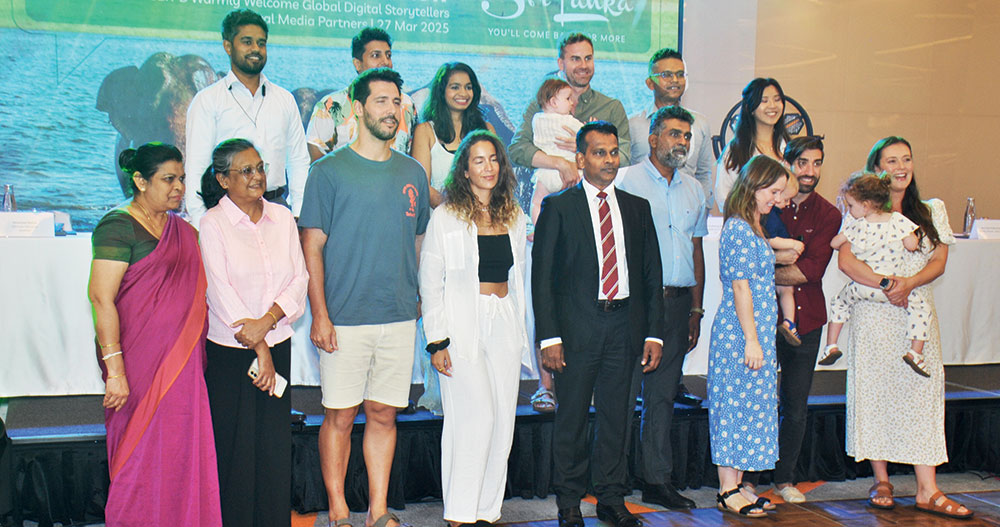
Sri Lanka Tourism Bureau hosted a landmark event at cinnamon Life for an ambitious campaign to spotlight Sri Lanka as a top travel destination. This initiative hosted international influencers and local media to capture the unique charm of Sri Lanka’s destinations. These travel influencers will share thier real time content across platforms like Instragrams Tik Tok and youtube amplifying Sr Lanka as a must visit destination. Many media personal, bloggers and influencers participated in this event which will take them on a tourism travel featuring some of Sri Lanka’s top destination.
Sri Lanka Tourism Promotion Bureau (SLTPB) hosted a landmark event at the Cinnamon Life Hotel, Colombo. The event was led by . Deputy Minister of Tourism, Prof. Ruwan Ranasinghe, with the participation of SLTPB Chairman Buddika Hewawasam, officials, travel influencers and their families, as well as journalists specializing in tourism sector reporting. The gathering set the stage for transformative initiatives aimed at bolstering Sri Lanka’s tourism sector and redefining its global image.
In his opening remarks, Buddika Hewawasam underscored the challenges facing the tourism sector, particularly the seasonal dip in arrivals during the summer months. “The next few years will be the most challenging period for all of us,” Hewawasam stated, emphasizing the need for international collaboration and strategic development. He further highlighted the critical role played by international travel influencers and media professionals in raising awareness of Sri Lanka’s hospitality and inspiring tourists worldwide to visit.
- Dileep Mudadeniya
- Deputy Minister of TourismProfess or Dr Ruwan Ranasinghe
- Guests
The Deputy Minister of Tourism, Prof. Ruwan Ranasinghe, detailed the innovative nature of the campaign and its importance in showcasing Sri Lanka’s rich heritage, natural beauty, and diverse travel experiences to mainstream and emerging tourism markets.
During the event, several prominent travel influencers shared their thoughts about Sri Lanka’s uniqueness as a destination. They highlighted that Sri Lanka is a country where travellers don’t need to worry about finding incredible experiences—nature has already done the hard work. The influencers remarked on Sri Lanka’s unparalleled diversity, noting that it is possible to experience a range of climates within just a few hours by travelling to different parts of the island. From sun-soaked beaches to misty highlands, and from lush forests to cultural treasures, Sri Lanka offers a world of adventures in a compact and accessible setting.
In comparison to destinations like Bali, which some influencers noted as overcrowded, Sri Lanka stands out with stable and balanced tourism activities. The event attendees were thrilled by the country’s warm hospitality, authentic DDirector cuisine with an impressive variety, long history, and rich culture. These qualities make Sri Lanka not only inviting but genuinely unforgettable for visitors.
The travel influencers in attendance expressed strong confidence in their ability to share this powerful message with the world. They were determined to shape international travel trends by showcasing Sri Lanka’s unique appeal, while also helping to attract new types of guests. The influencers represented a diverse range of travel segments, including family travellers, solo female travellers, honeymooners, and adventure seekers. Their efforts were supported by Sri Lanka Tourism officials and journalists representing both local and international media agencies.
The ‘Sri Lanka, A Story for Every Season’ campaign represents SLTPB’s first large-scale effort to boost summer travel through digital storytelling and influencer collaboration.
Featuring a curated destination familiarization tour, the campaign will spotlight wildlife safaris, cultural heritage, spiritual pilgrimage sites, scenic landscapes, and adventure tourism. Influencers will produce high-impact content for platforms like Instagram, YouTube, and Facebook, reaching over 2.2 million travel enthusiasts globally.
Sri Lanka Tourism shared impressive winter peak season results, with international arrivals reaching 665,295 by March 23, 2025—a marked increase compared to the previous year. These figures illustrate the sector’s potential for growth, and the campaign aims to sustain momentum throughout the summer months.
The event was a call to action for stakeholders to unite in elevating Sri Lanka’s global tourism appeal. With plans to generate over LKR 32 million worth of media coverage and connect with diverse travel segments, the campaign underscores Sri Lanka’s commitment to redefining itself as a leading destination for year-round travel.
By Zanita Careem
Pix by Darmasena Welipitiya
-

 Business2 days ago
Business2 days agoColombo Coffee wins coveted management awards
-

 Features3 days ago
Features3 days agoStarlink in the Global South
-

 Business4 days ago
Business4 days agoDaraz Sri Lanka ushers in the New Year with 4.4 Avurudu Wasi Pro Max – Sri Lanka’s biggest online Avurudu sale
-

 Business5 days ago
Business5 days agoStrengthening SDG integration into provincial planning and development process
-

 Business4 days ago
Business4 days agoNew SL Sovereign Bonds win foreign investor confidence
-

 Sports6 days ago
Sports6 days agoTo play or not to play is Richmond’s decision
-

 Features3 days ago
Features3 days agoModi’s Sri Lanka Sojourn
-

 Sports5 days ago
Sports5 days agoNew Zealand under 85kg rugby team set for historic tour of Sri Lanka



